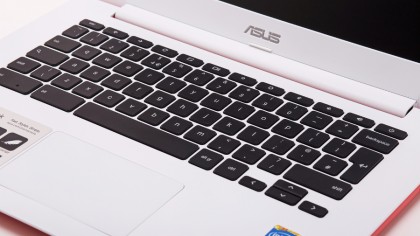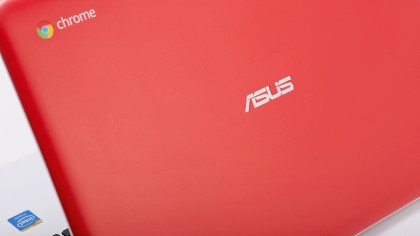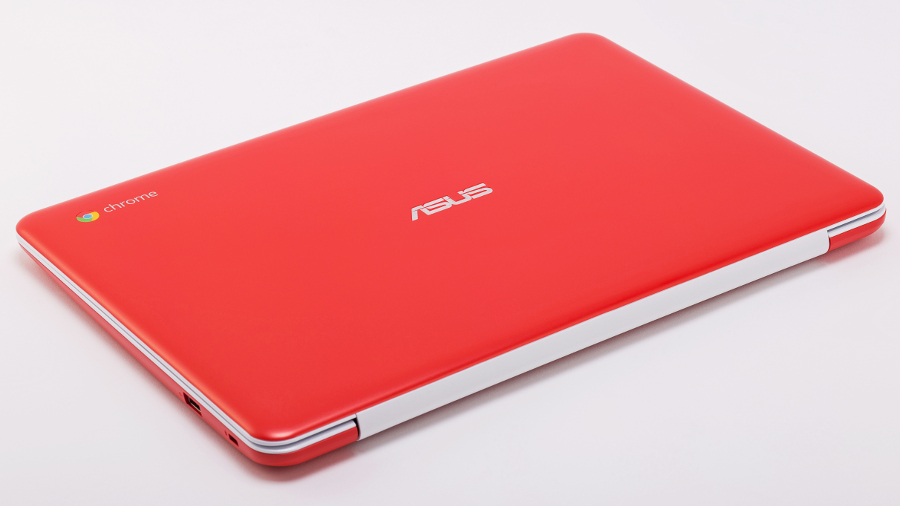Why you can trust TechRadar
We used the Asus C300M for two weeks in our work machine rotation. It went travelling with us, was whipped out on trains and sat in on meetings. It rested on our lap in the evening as we live tweeted Question Time. We used it to write approximately 15,000 words of copy, take minutes, watch Netflix and crunch data in spreadsheets.
The extra width made for a more comfortable typing experience than our usual portable machine, a Samsung Series 3 Chromebook. The familiar chiclet style keyboard is a proletarian choice, with plenty of space around the keys – but with less feedback than is ideal.

Google Apps performs, as you would expect, flawlessly. It would be a poor Chromebook that couldn't handle Google's native applications. With just 2GB of RAM on board, Chrome only slowed down with multiple instances of the browser running, each with multiple tabs open. That's Chrome for you though, every tab a separate instance staking claim to its own republic of volatile memory. The C300M felt less sluggish than our other work laptop, a Samsung Series 5 Ultrabook running Chrome on Windows 8.
Media matters
The real test for a Chromebook is streaming media use. The big, shiny sticker next to the C300M's capacious trackpad promises "high-quality audio" – when what we actually get from the system's hidden speakers is serviceable reproduction.
Playing "Dark Side of the Moon" in Spotify Premium, we were able to pick out most of the detail, cleanly rendered with stereo effects intact. There wasn't much distortion, but it was thin and focused at the treble end of the spectrum. We tried a bit of recently re-mastered Nick Drake, whose sparse acoustic fingerpicking and close mic'd vocal seemed to suit the dynamic range of the C300M's speakers. Slipknot's "Wait and Bleed" was just scream and snare, the guitars sounding like a bee trapped in a jar.
Next, we opened Amazon Instant Video for some HD streaming at 720p. The Doctor Who special "The Snowmen" played back stutter-free over our 802.11n Wi-Fi connection – but it's here that the C300M's TN LCD display began to show its weakness. We struggled to position it at a viewing angle that would allow us to enjoy the Doctor's exploits without shadow or light obscuring the screen. It was much better up close, though the picture was a little soft and lacking some vibrancy.
The final outing in the media performance tests was browser based bash-'em-up Bastion. At full resolution the C300M handled the cartoony Zelda-a-like admirably, with Chrome rarely dropping below 51 frames per second. Only in sustained combat did we see a dip down to 44 fps. For us, that says this is a finely balanced device – with some room to grow.

Battery life
With this level of hands-on performance you might expect the C300M to burn through its battery swiftly, but that seems far from the case. Asus promise us a 10 hour battery life and, while we never quite got that in real world use, it's pretty near. We recorded one stint of 9 hours 16 minutes of mixed usage, with power settings tweaked using Keep Awake to prevent the screen from going to sleep. Over our period of use, the battery calibrated to reporting 9 hours 30 minutes of juice left when full.
This is outstanding performance by any measure, but especially impressive when stacked up against other 13.3-inch Chromebooks. It's a full two hours longer than the – on paper, more powerful – Samsung Chromebook 2 (our review of this machine clocked the battery life at 7 hours 32 minutes). It beats the battery life of Toshiba's 1080p Chromebook 2 by an even larger margin.
Need a device for a long commute? If you can look past, or even love the Tonka toy aesthetics, you may well have found it...
